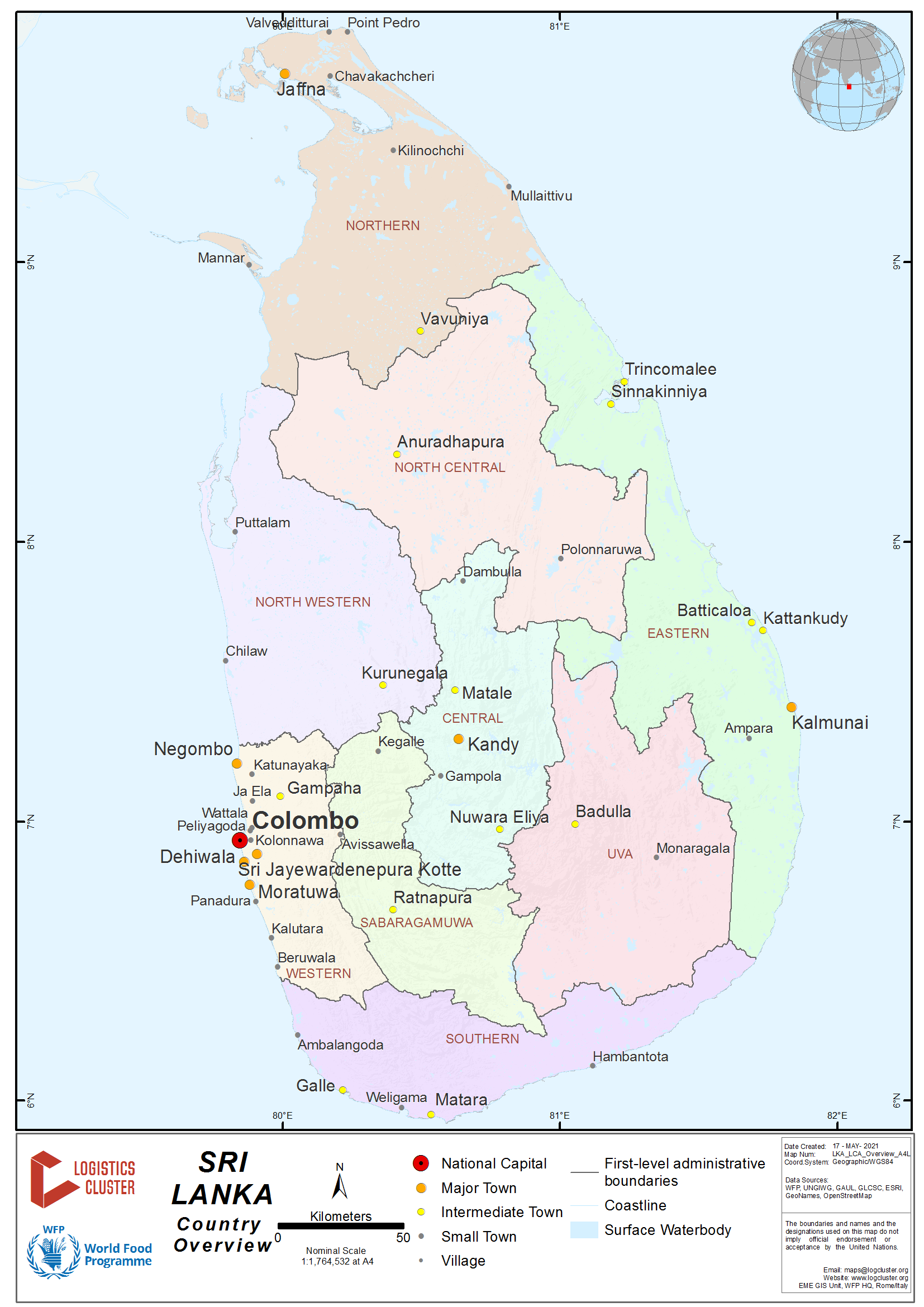Sri Lanka - 1 Country Profile
Generic Information
Sri Lanka (formerly known as Ceylon), officially the Democratic Socialist Republic of Sri Lanka, is an island country in South Asia, located in the Indian Ocean to the southwest of the Bay of Bengal and to the southeast of the Arabian Sea. The island is historically and culturally intertwined with the Indian subcontinent but is geographically separated from the Indian subcontinent by the Gulf of Mannar and the Palk Strait.
Sri Lanka is a middle-income country with high human development. The GDP per capita in Sri Lanka was 4,013.69 U.S. dollars in 2021, and GDP Annual Growth Rate averaged 4.49 per cent from 2003 until 2022. Sri Lanka ranked 73 out of 191 countries in the 2021 UNDP Human Development Index. Rice is the staple food in Sri Lanka and is cultivated during Maha and Yala, the two major paddy-producing seasons. The prevalence of undernourishment averaged 3.4% from 2019 until 2021. In 2020, rates of wasting, stunting, and being overweight in children under 5 were estimated at 15.1%, 16.0% and 1.3% respectively. The prevalence of anaemia in women aged 15 to 49 was 34.6% in 2019.
The humanitarian situation in Sri Lanka has deteriorated since 2022, owing to the worst-ever multi-dimensional crisis since independence in 1948. The country’s high public debt levels and depleted forex reserves have triggered severe inflation, anti-government protests, daily blackouts, and shortages of necessities such as fuel and medicines. Sri Lanka continues to face this serious economic crisis, while food security levels deteriorating to concerning levels in recent months and with a food inflation (year-on-year) increase that reached 93.7% in urban areas of Colombo. This, compounded by reduced agriculture production and soaring food prices, whipped into an acute food and malnutrition crisis nationwide, leaving over 6.2 million people, 28% of the total population, moderately food insecure and about 66,000 people in severe food insecurity, according to the 2022 FAO/WFP Crop and Food Security Assessment Mission (CFSAM) report. A UNICEF report in September 2022 estimated that 2.3 million children in Sri Lanka require immediate humanitarian assistance, making it among the top 10 countries with the highest number of malnourished children and the numbers are expected to rise further. A substantial proportion of markets were reporting concerns around rising and/or unstable prices, according to WFP’s recently released Market Functionality Index (MFI) reports.
Generic country information can be located from sources which are regularly maintained and reflect current facts and figures. For a generic country overview, please consult the following sources:
Generic Information
Wikipedia information on Sri Lanka
Economist Intelligence Unit information on Sri Lanka*
(*note - this is a paid service)
Humanitarian Info
UNOCHA information on Sri Lanka
Facts and Figures
Wolfram Alpha information on Sri Lanka
World Bank information on Sri Lanka
World Population Review information on Sri Lanka
